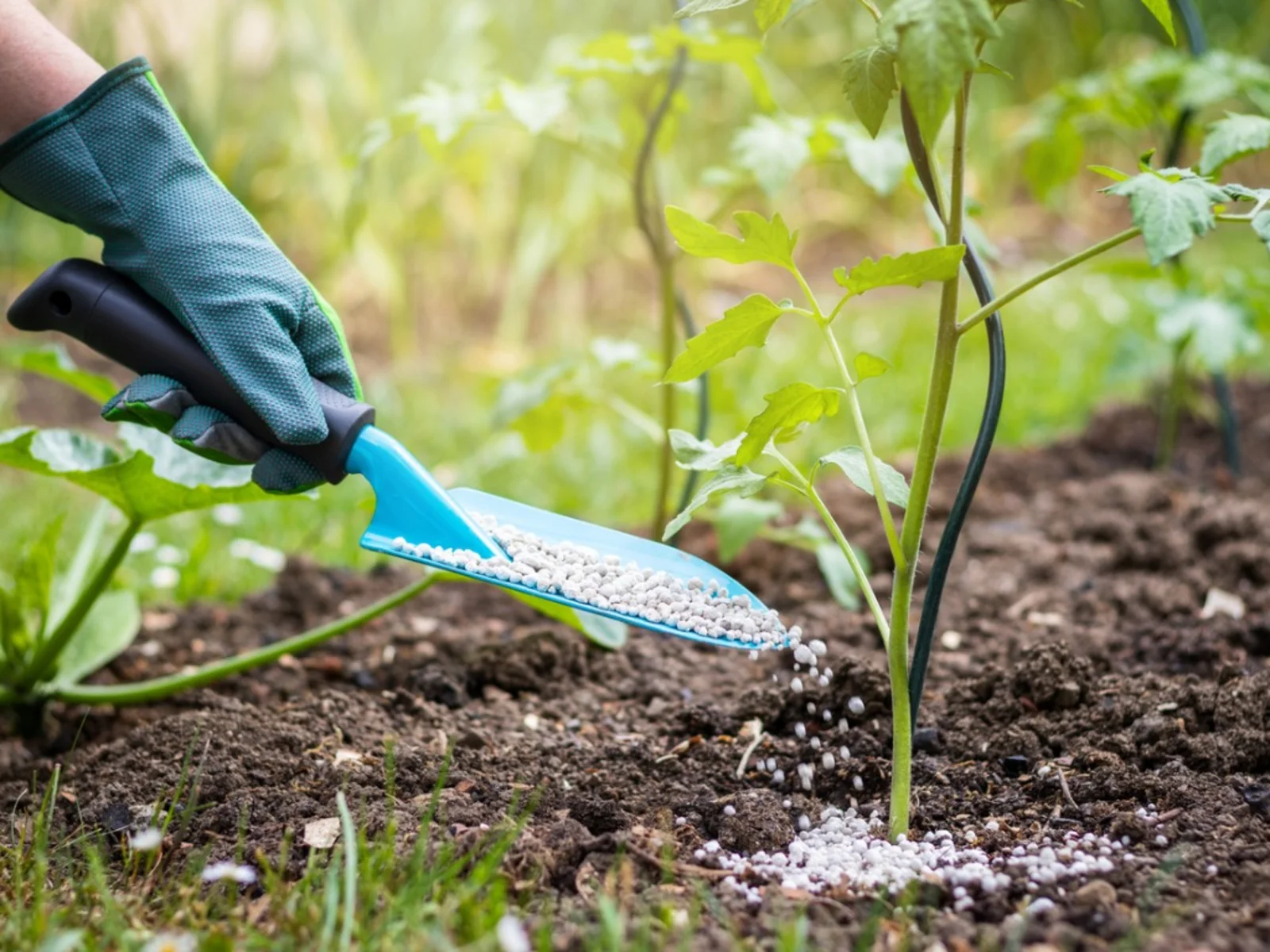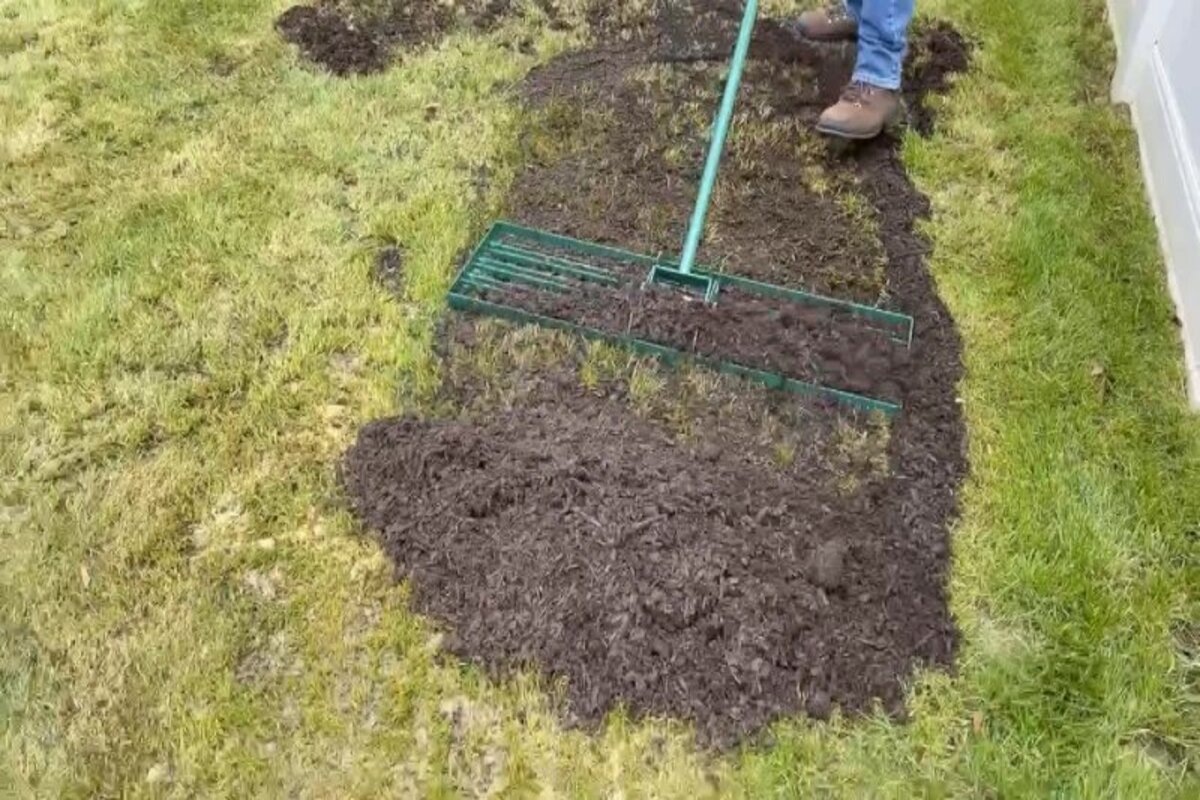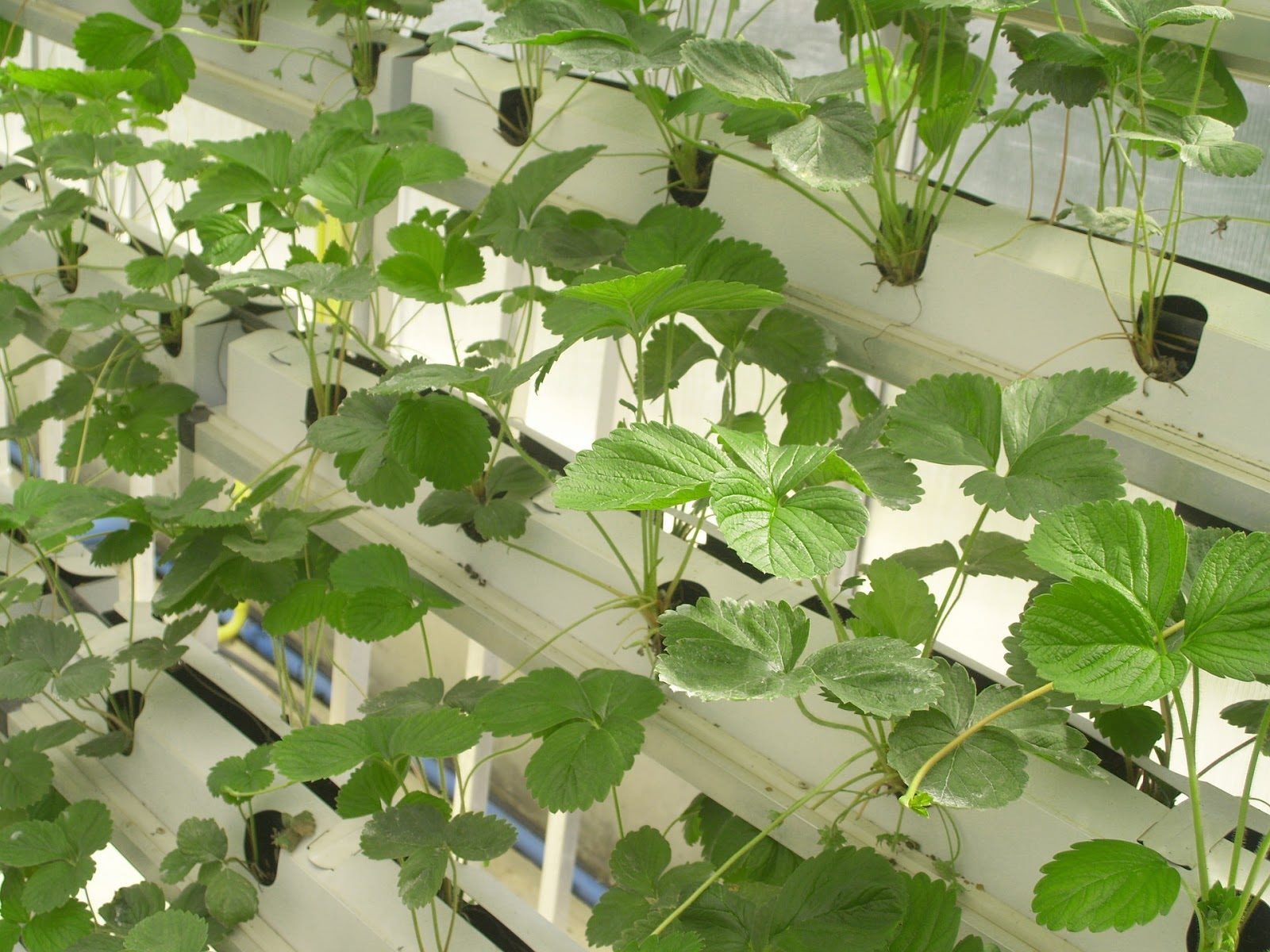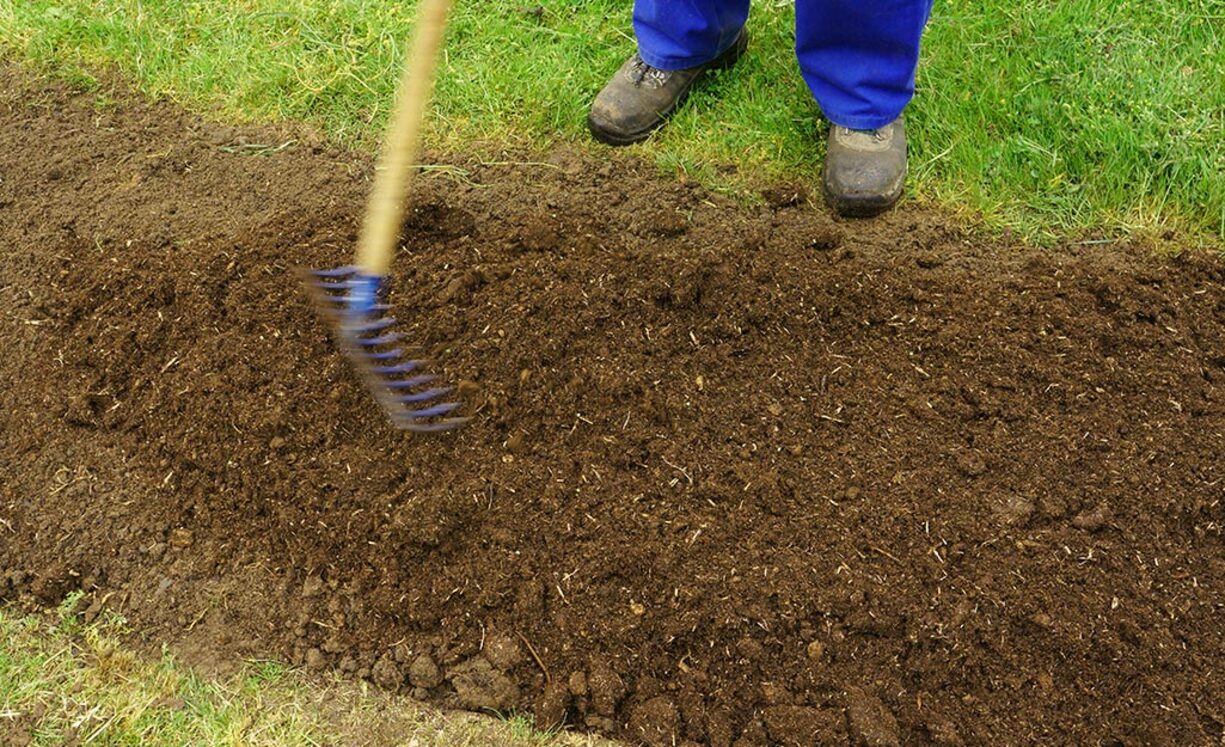Home>Gardening Basics>Understanding Soil>How To Add Soil To Lawn


Understanding Soil
How To Add Soil To Lawn
Published: February 13, 2024
Learn how to add soil to your lawn and improve its health. Understand the importance of soil composition and how it affects your grass.
(Many of the links in this article redirect to a specific reviewed product. Your purchase of these products through affiliate links helps to generate commission for Chicagolandgardening.com, at no extra cost. Learn more)
Table of Contents
Introduction
Soil is the lifeblood of your lawn, providing essential nutrients, structure, and support for healthy grass growth. Over time, the soil in your lawn may become compacted, depleted of nutrients, or unsuitable for optimal plant growth. Adding new soil to your lawn can rejuvenate its health and vitality, creating an ideal environment for lush, green grass to thrive.
In this comprehensive guide, we will explore the essential steps for adding soil to your lawn, from assessing your soil's needs to selecting the right type of soil and executing the process with precision. Whether you are dealing with patchy, thin grass or soil that lacks the necessary nutrients for robust growth, this guide will equip you with the knowledge and strategies to transform your lawn into a vibrant, resilient landscape.
By understanding the intricacies of soil composition, moisture retention, and nutrient availability, you can take proactive measures to address any deficiencies and create an optimal foundation for a flourishing lawn. With the right approach and a commitment to proper soil management, you can elevate the health and beauty of your lawn, enhancing its resilience against environmental stressors and promoting a verdant, inviting outdoor space for relaxation and recreation.
Throughout this journey, we will delve into the nuances of soil assessment, the selection of suitable soil varieties, and the meticulous process of integrating new soil into your lawn. Additionally, we will discuss post-application care and maintenance practices to ensure that your newly enriched soil fosters robust, enduring grass growth. Let's embark on this enriching exploration of soil management, empowering you to elevate the vitality and allure of your lawn through the transformative addition of nourishing soil.
Assessing Your Lawn’s Soil Needs
Before embarking on the process of adding soil to your lawn, it is crucial to assess the current state of your soil to determine its specific needs and deficiencies. This evaluation will provide valuable insights into the composition, texture, drainage, and nutrient levels of the soil, guiding you in making informed decisions regarding the type and quantity of soil amendments required for optimal lawn health.
One fundamental aspect of soil assessment is determining its texture, which can be classified as sandy, loamy, or clayey. Sandy soil tends to drain quickly but may struggle to retain nutrients, while clayey soil has excellent nutrient retention but can become waterlogged and compacted. Loamy soil, a balanced mixture of sand, silt, and clay, is often considered ideal for promoting healthy plant growth due to its excellent drainage and nutrient retention properties.
Furthermore, assessing the pH level of the soil is essential, as it influences the availability of essential nutrients to your grass. Most grass species thrive in soil with a slightly acidic to neutral pH range, typically between 6.0 and 7.0. Conducting a soil pH test will enable you to determine if your soil requires amendments to adjust its pH for optimal grass growth.
Another critical aspect to evaluate is the soil’s compaction level, as compacted soil can impede root development and water infiltration, hindering the overall health of your lawn. Simple tests, such as probing the soil with a screwdriver or soil compaction meters, can provide insights into the degree of compaction and guide your decision-making process regarding soil aeration and amendment.
Additionally, assessing the nutrient levels in your soil through professional soil testing or DIY soil test kits is imperative. Understanding the existing nutrient profile of your soil, including nitrogen, phosphorus, and potassium levels, will inform the selection of soil amendments to address any deficiencies and promote robust grass growth.
By thoroughly evaluating your lawn’s soil texture, pH, compaction, and nutrient levels, you can gain a comprehensive understanding of its specific needs, laying the groundwork for targeted soil amendments that will revitalize your lawn and nurture thriving, resilient grass.
Choosing the Right Soil
When it comes to adding soil to your lawn, selecting the appropriate soil type is a pivotal decision that significantly influences the health and vitality of your grass. The ideal soil for your lawn should align with its specific needs, addressing any deficiencies in texture, nutrient content, and pH levels while fostering optimal root development and water retention.
One crucial consideration when choosing soil is its texture, as different soil types offer distinct advantages and challenges. For instance, sandy soil, characterized by its coarse, granular texture, provides excellent drainage but may require frequent irrigation and additional nutrients to support robust grass growth. On the other hand, clayey soil, with its fine particles, excels in retaining moisture and nutrients but may necessitate amendments to enhance drainage and prevent compaction.
Loamy soil, often regarded as the gold standard for plant growth, combines the beneficial properties of sand, silt, and clay, offering optimal drainage, nutrient retention, and aeration. When seeking soil for your lawn, prioritizing loamy soil or soil blends that mimic its composition can provide a balanced foundation for healthy grass growth.
Moreover, the pH level of the soil is a critical factor to consider when selecting soil amendments. If your soil test reveals an imbalanced pH, you can choose soil blends or additives that align with the desired pH range for your grass species, promoting optimal nutrient availability and uptake.
Additionally, evaluating the nutrient content of potential soil amendments is essential. Look for soil products enriched with organic matter, such as compost or well-rotted manure, to enhance soil fertility and microbial activity, fostering a nutrient-rich environment for your grass to thrive.
When choosing soil for your lawn, consider the specific needs of your grass species, the existing soil composition, and the environmental conditions in your region. By selecting soil that complements these factors and addresses any deficiencies, you can lay the groundwork for a resilient, vibrant lawn that flourishes in its rejuvenated, nutrient-rich environment.
Preparing Your Lawn for New Soil
Before adding new soil to your lawn, it is essential to prepare the existing turf and soil to facilitate the seamless integration of the fresh soil amendments. Proper preparation sets the stage for optimal soil penetration, root development, and nutrient uptake, ensuring that your grass receives the full benefits of the new soil and flourishes in its revitalized environment.
One fundamental step in preparing your lawn for new soil is to assess the existing grass coverage and address any areas with sparse or unhealthy growth. By overseeding thin or patchy areas and addressing weed infestations, you can promote a denser, more resilient grass cover that will benefit from the addition of fresh soil.
In addition, aerating the soil prior to adding new soil amendments is crucial for enhancing soil structure, alleviating compaction, and improving water and nutrient infiltration. Core aeration, which involves removing plugs of soil from the lawn, can effectively loosen compacted soil, allowing the new soil to integrate more seamlessly and fostering robust root development.
Furthermore, removing thatch buildup, which consists of dead grass, roots, and debris, is essential to create a conducive environment for the new soil to interact with the underlying turf. Thatch removal promotes better soil-to-root contact and enhances the absorption of nutrients and water, contributing to the overall health and vigor of your grass.
It is also important to address any drainage issues or uneven terrain that may impede the distribution of the new soil across your lawn. Leveling the ground and optimizing drainage patterns will ensure uniform soil application and promote consistent grass growth throughout your lawn.
Prior to adding new soil, it is advisable to mow your lawn to a moderate height, allowing the new soil to make direct contact with the existing turf and facilitating even distribution. Trimming the grass enables the soil to reach the soil surface more effectively, promoting seamless integration and fostering robust root establishment.
By meticulously preparing your lawn for the addition of new soil, you can create an optimal foundation for healthy, vibrant grass growth. Addressing existing turf conditions, enhancing soil structure, and optimizing the terrain sets the stage for a successful soil integration process, laying the groundwork for a revitalized, resilient lawn that thrives in its enriched environment.
Adding Soil to Your Lawn
Once you have assessed your soil’s needs, selected the appropriate soil type, and prepared your lawn for the soil addition, it is time to execute the process of integrating new soil into your existing turf. This critical phase requires precision, attention to detail, and a methodical approach to ensure that the new soil seamlessly integrates with the underlying turf, fostering optimal root development and sustained grass health.
The process of adding soil to your lawn typically begins with the even distribution of the soil amendments across the targeted areas. Using a sturdy garden rake or a specialized soil spreader, uniformly distribute the new soil to achieve consistent coverage and promote balanced grass growth throughout your lawn.
As you apply the new soil, strive for an even layer that complements the existing terrain and grass cover, fostering a harmonious integration of the fresh soil with the underlying turf. Pay particular attention to any areas with sparse grass growth or soil deficiencies, ensuring that these regions receive adequate soil coverage to support robust grass development.
After distributing the new soil, gently rake the surface to encourage the soil to settle and make direct contact with the existing turf. This process promotes soil-to-root interaction, facilitates nutrient absorption, and fosters the establishment of a healthy, resilient grass foundation.
Following the application of new soil, lightly water the treated areas to promote soil compaction and enhance the initial bonding between the fresh soil and the underlying turf. Adequate moisture encourages the integration of the new soil, facilitating root penetration and nutrient uptake for sustained grass vigor.
It is essential to monitor the soil moisture levels in the treated areas, ensuring that the newly added soil remains adequately hydrated to support grass growth and root establishment. Regular observation and targeted irrigation can optimize the soil integration process, fostering a conducive environment for thriving, resilient grass.
By meticulously executing the process of adding soil to your lawn, you can create an environment that nurtures robust, enduring grass growth. The seamless integration of new soil with the existing turf lays the groundwork for a revitalized, vibrant lawn that flourishes in its enriched, nourishing environment, fostering a verdant, inviting outdoor space for relaxation and recreation.
Caring for Your Lawn After Adding Soil
After adding new soil to your lawn, diligent post-application care is essential to promote the successful integration of the fresh soil, facilitate robust root development, and sustain the health and vitality of your grass. By implementing targeted maintenance practices and monitoring the response of your lawn to the soil addition, you can optimize the conditions for lush, resilient grass growth and enjoy the enduring beauty of a revitalized landscape.
One crucial aspect of post-soil addition care is monitoring soil moisture levels to ensure that the newly integrated soil remains adequately hydrated. Consistent, targeted watering, especially during dry spells, promotes root establishment and nutrient uptake, fostering the resilience and vigor of your grass.
Regularly inspecting the treated areas for signs of soil settling or uneven distribution can guide targeted soil adjustments, ensuring uniform coverage and optimal soil-to-root contact. Addressing any areas with inadequate soil coverage or compaction issues can enhance the integration process and promote balanced grass growth throughout your lawn.
Applying a high-quality, slow-release fertilizer tailored to your grass species and soil composition can complement the soil addition, providing essential nutrients to support vigorous grass growth and sustained health. By nourishing your lawn with the right blend of nutrients, you can fortify its resilience against environmental stressors and promote a lush, vibrant landscape.
Maintaining a moderate mowing height and adhering to a regular mowing schedule contributes to the overall health and appearance of your lawn, promoting dense, resilient grass cover and fostering optimal soil-to-root contact. Proper mowing practices support the integration of the new soil, enhancing the establishment of a thriving, enduring grass foundation.
Observing the response of your lawn to the soil addition and adjusting your maintenance practices accordingly enables you to address any emerging issues promptly and optimize the conditions for sustained grass health. By staying attuned to the evolving needs of your lawn, you can nurture a vibrant, resilient landscape that flourishes in its enriched, nourishing environment.
By implementing targeted post-soil addition care and maintenance practices, you can foster the sustained health and vitality of your lawn, nurturing robust, enduring grass growth and creating an inviting outdoor space for relaxation and recreation. The meticulous attention to post-application care sets the stage for a revitalized, vibrant lawn that thrives in its enriched environment, enriching your outdoor experience with its enduring beauty and allure.
Conclusion
Adding soil to your lawn is a transformative process that rejuvenates the health and vitality of your grass, creating an optimal environment for lush, resilient growth. By assessing your soil’s specific needs, selecting the right soil type, and meticulously preparing and integrating the new soil, you can elevate the beauty and resilience of your lawn, fostering an inviting outdoor space for relaxation and recreation.
Through thorough soil assessment, you gain valuable insights into the texture, pH, compaction, and nutrient levels of your soil, guiding informed decisions regarding soil amendments to address any deficiencies. Selecting the appropriate soil type, such as loamy soil or tailored soil blends, complements your grass species and soil composition, laying the foundation for robust, enduring grass growth.
Preparing your lawn for new soil involves addressing existing turf conditions, enhancing soil structure, and optimizing the terrain to facilitate seamless soil integration. By overseeding thin areas, aerating the soil, and promoting even soil distribution, you create an ideal environment for the new soil to interact with the underlying turf, fostering optimal root development and sustained grass health.
The meticulous process of adding soil to your lawn requires precision and attention to detail, from the uniform distribution of soil amendments to the gentle raking and targeted watering of the treated areas. By monitoring soil moisture levels and responding to the evolving needs of your lawn, you can optimize the conditions for robust, enduring grass growth, nurturing a vibrant, resilient landscape.
Caring for your lawn after adding soil involves targeted maintenance practices, including consistent watering, soil adjustments, fertilization, and proper mowing, to support the successful integration of the new soil and foster sustained grass health. By staying attuned to the evolving needs of your lawn, you can nurture a vibrant, resilient landscape that flourishes in its enriched, nourishing environment.
By embarking on this enriching journey of soil management, you have empowered yourself to elevate the vitality and allure of your lawn through the transformative addition of nourishing soil. The meticulous attention to soil assessment, selection, preparation, integration, and post-application care sets the stage for a revitalized, vibrant lawn that thrives in its enriched environment, enriching your outdoor experience with its enduring beauty and allure.




